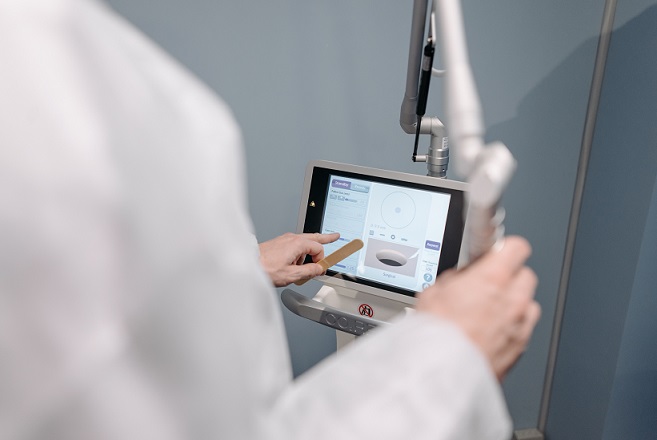Another aspect of FELA claims is that there isn’t a cap on the amount of compensation you may recover. This lack of limits also separates FELA claims from workers’ compensation claims.
What is FELA? The Federal Employers Liability Act (FELA) enables railroad workers to seek compensation following a work-related accident. FELA claims work differently from workers’ compensation claims that don’t apply to railroad workers.
If you would like to file a FELA claim for a work injury involving a railroad accident, consult the Chicago railroad worker injury attorneys at Ankin Law by calling 312-600-0000 for a free consultation.
What Is the Purpose of FELA?
Train accidents often occur in Illinois. According to Statista, 995 rail fatalities and 6,700 injuries occurred in 2023 because of train accidents, many of which involved railroad workers.
So, what is the Federal Employers Liability Act? The U.S. government introduced the Federal Employers Liability Act, or FELA, in 1908 as a new federal law that offers specific protections for railroad workers in the event of work-related accidents and injuries. Under FELA, workers in this industry may be able to prove that a railroad company’s negligence contributed to their injuries, enabling them to seek compensation from employers.
While many other industries offer benefits to employees in the form of workers’ compensation insurance coverage, railroad workers don’t have this protection. Instead, following accidents and injuries on the job, they would be able to file a FELA claim to argue that the railroad or another party was partially or entirely responsible for the accident and resulting damages.
Many types of railroad workers can file a FELA claim, including train engineers and other crew, mechanics, electricians, signal persons, laborers, and carpenters.
When filing a FELA claim, railroad workers can open a case in a state or federal court.
Benefits of FELA for Railroad Workers in Illinois
There are several types of compensation that FELA covers for workers who sustain injuries on the job. These include the following:
Economic Damages
Like workers’ compensation claims, FELA claims cover economic losses associated with injuries sustained on the job, whether you want to recover for a head injury at work or another type of work-related injury.

These damages cover a range of expenses, such as:
- Medical costs, including emergency and ongoing care expenses
- Physical therapy and rehabilitation
- Temporary and permanent disability
- Lost wages
- Lost future earnings
Non-economic Damages
One of the reasons FELA claims may result in higher compensation than workers’ comp claims is the ability to recover certain non-economic damages in addition to economic damages. Workers’ comp claims typically only award economic damages, but you can also recover damages like pain and suffering for your injuries with a FELA claim.
In addition to pain and suffering experienced because of your injuries, other non-economic damages may include psychological distress in the form of anxiety or depression, along with disfigurement, loss of consortium, and loss of enjoyment of life.
The Cap for FELA Claims
Another aspect of FELA claims is that there isn’t a cap on the amount of compensation you may recover. This lack of limits also separates FELA claims from workers’ compensation claims.
However, as with workers’ compensation, you have a specific amount of time to file before you no longer qualify for benefits. In the case of FELA claims, workers have three years from the time of the injury or discovery of injury to file a claim. If you don’t file on time, you may be unable to recover any compensation for your injuries.
How to File a FELA Claim in Illinois
Now that you know the answer to the question “what is a FELA claim?” you should know how to handle a workplace injury to succeed with a FELA claim.
The following are some of the main steps to take if you wish to recover compensation with this type of claim after a railroad accident.
1. Seek Medical Attention
If you believe you have sustained any injuries following a work-related railway accident, the first step to take is to seek medical attention from a licensed physician.
The longer you wait to seek medical care, the harder it will be to prove that the railroad accident caused your injuries. A qualified medical professional can assess your injuries, provide an official diagnosis, and begin creating medical records that detail the nature of your injuries.
Not only will getting medical care for your injuries help you start your medical recovery, but it will also provide you with valuable evidence to prove your case in the form of medical bills and records.
Once you’ve sought treatment, be sure to stick to your doctor’s treatment plan or work with him or her to make any necessary changes if you are unhappy with your plan. Never stop or change treatments without consulting your doctor beforehand, as this could compromise both your health and your FELA claim.
2. Complete an Accident Report
When you are capable, you will also need to complete an accident report that details the nature of the railroad accident. You should avoid completing this report until you are physically and mentally capable of doing so.
For instance, if you suffered shock or severe trauma following the accident, you should wait until you are of sound mind before completing the accident report, as this will help create a more accurate and detailed report that may support your claim.
If you’re not sure how to go about reporting your injury, here is your guide to reporting work-related injuries.
3. Do Not Speak With Railroad Representatives
Railroad companies anticipate workers filing FELA claims and lawsuits after accidents, meaning that they will take certain steps of their own to protect themselves and avoid paying compensation by denying liability.
In the process of defending themselves, these companies may send representatives to record statements from injured workers. The purpose of doing so would be to record any statements that might help the company deny or reduce liability, such as an admittance of fault on the part of the injured worker.
As such, it’s in your best interest to avoid speaking with a railroad representative following your accident, especially without an attorney.
4. Collect Relevant Evidence
To help build your claim, you should also collect as much applicable evidence as you can following the accident.
There are plenty of pieces of evidence that might support a FELA claim, such as:
- Accident reports, potentially involving police and their own reports
- Footage of the accident, including CCTV camera footage or footage from witnesses or others
- Photographs of your injuries and other damage
- Witness statements
- Medical records
This and other evidence could help show that a railroad company or another party was liable for the accident and your injuries.
Apart from physical evidence, you can also maintain a detailed journal including information about the accident, such as your version of events, the nature of your injuries, and the recovery process. This journal can go a long way in helping you prove non-economic damages like pain and suffering, as it can detail the personal experience you have as you recover from injuries.
5. Consult a Railroad Worker Injury Attorney
Before filing a FELA claim, the next step is to consult an Illinois railroad worker injury lawyer to discuss your case.
An attorney with experience handling these types of claims can meet with you in a free initial consultation to discuss a potential claim. Based on the details of your case, the attorney can determine what options you have and the amount of compensation you’re able to seek.
In addition, the attorney may help determine whether to file your claim in a state or federal court, depending on the specific nature of your case. He or she will also help you prove how a railroad company, parts manufacturer, or other parties were liable for the injuries and damages you sustained.
If you have any issues collecting evidence to use in your case, this is another area where an attorney can help. Not only can a lawyer help obtain medical records, accident reports, footage of the accident, and other evidence, but he or she may also be able to hire an expert witness or other professionals to further support your case.
Ultimately, having an experienced lawyer by your side in these cases can mean the difference between success and claim denial.
Reach Out to the Right Attorney to Handle Your FELA Claim
With a better understanding of how FELA claims work and the need for an attorney, you should seek representation from the right law firm to help handle your case. You’ll want an attorney who’s not just experienced with work injury cases, but who has also helped handle FELA cases pertaining to railroad workers.
At Ankin Law, we have experience working with railroad workers to recover compensation through FELA claims. Contact us today to speak with our reliable Chicago railroad worker injury attorneys in a free consultation.


Join the conversation!